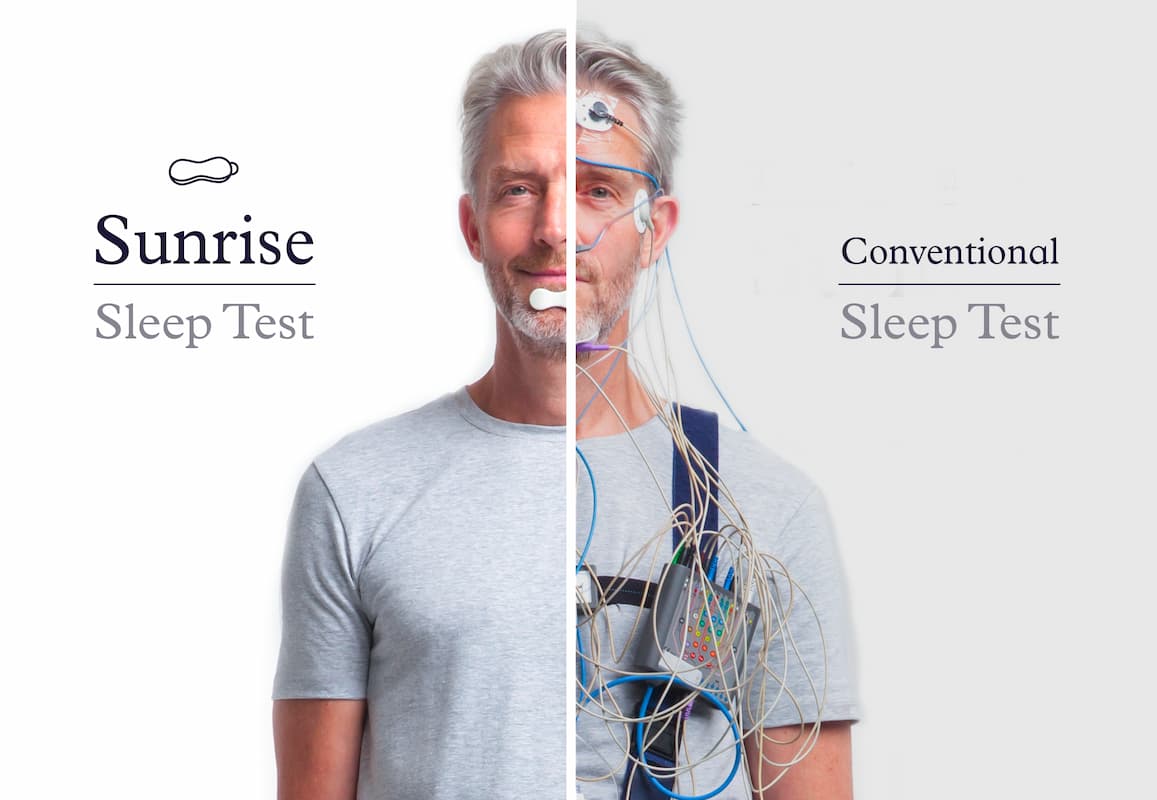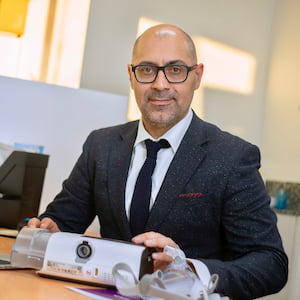Types of Sleep Disorders
Sleep disorders encompass a wide range of conditions that disrupt the typical patterns of sleep that a person should have, leading to difficulties falling asleep, staying asleep or experiencing sleep that is considered “restful”.
There are several types of sleep disorders, each with its unique characteristics. “Insomnia, obstructive sleep apnea (OSA), and restless legs syndrome (RLS) are considered to be the most common sleep disorders in the general population.” 1
Common sleep disorders include:
- Insomnia;
- Obstructive Sleep Apnoea (OSA); and
- Restless Legs Syndrome (RLS)
Other sleep disorders include:
- Narcolepsy;
- Sleepwalking;
- Night terrors; and
- Central Apnoea
Understanding the various sleep disorders and performing a sleep study to confirm whether or not you may have a sleep disorder is essential in obtaining a proper diagnosis and effective treatment for improved sleep health and overall well-being.
Do I Need a Sleep Study?
If you, or someone you know, suspect that you may have a sleep disorder, seeking a professional sleep study is crucial. A sleep study, also known as a polysomnography, is a non-invasive test that monitors various bodily functions during sleep, including brain activity, eye movements, muscle activity, heart rate, respiratory effort, airflow, and blood oxygen levels.
A sleep study provides essential information for an accurate diagnosis of sleep disorders and their severity, including the very common and dangerous Obstructive Sleep Apnoea (OSA). This article will briefly cover the symptoms and dangers of sleep apnoea before covering in detail what sleep studies are available for you to obtain a proper diagnosis.
Sleep Apnoea: A Silent Killer
Did you know? A study showed 80% of men and 93% of women2 are living with the OSA sleep disorder but have not been diagnosed by a sleep study. To make matters worse, untreated Sleep Apnea can cause significant health complications and may even lead to premature death.
Sleep Apnoea is a potentially life-threatening sleep disorder that often goes undiagnosed, leading to severe health consequences. It is imperative that you do not ignore any symptoms of sleep apnoea that you may have as, left untreated, this illness can have devastating effects on your health and wellbeing.
Symptoms of Sleep Apnoea include but are not limited to the following:
- Loud and Frequent Snoring
- Pauses in Breathing
- Excessive Daytime Sleepiness
- Morning Headaches
- Irritability and Mood Changes
- High Blood Pressure
- Weight Gain and/or Difficulty Losing Weight
Dangers of untreated Sleep Apnoea:
- Cardiovascular Complications
- Including increased risk of: hypertension, heart attacks, strokes and heart failure.
- Impaired Cognitive Function leading to fatal accidents while driving or operating machinery
- Type 2 Diabetes
- Mental Health Issues including depression and anxiety
- Increased risk of premature death
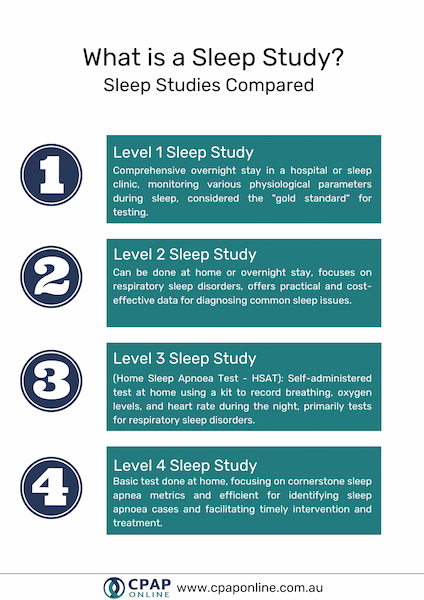
What is a Sleep Study?
A sleep study is a comprehensive observation and assessment of a person’s sleep to determine if they suffer from a sleep disorder such as the most common disorder Obstructive Sleep Apnoea (OSA). The study of sleep, medically known as a polysomnogram, is a non-invasive process whereby data is recorded and analysed by a sleep specialist. If you believe you are not sleeping right, a sleep study may be a great way to help yourself learn more about your symptoms and sleep health.
In Australia, we have 4 levels of sleep studies divided in two main groups, each appropriate for different circumstances and with various advantages and disadvantages.
Polysomnography (PSG)
- Level 1 Sleep Test – An overnight stay in a hospital or sleep clinic which tests for most types of non-respiratory and respiratory sleep disorders. The controlled environment of the clinic ensures high-quality data collection. This is the most comprehensive and considered the ‘gold standard’ in testing.
Level 1 Sleep Studies involve the detailed monitoring of various physiological parameters during sleep including but not limited to:- brain activity (EEG);
- eye movements (EOG);
- muscle activity (EMG);
- electrocardiogram (ECG);
- respiratory effort;
- body position;
- sound;
- digital video;
- airflow; and
- oxygen saturation (SPO2)
Patients undergoing a level 1 sleep test are also monitored by a Registered Polysomnographic Technologist in real time, in tandem with the aforementioned parameters. Level 1 tests are referral only and can be bulk-billed.
- Level 2 Sleep Test – This test can be performed either at the patient’s home or through an overnight stay at a clinic, similar to a Level 1 Sleep Test. A Level 2 sleep test is also by referral only. This tests for the same respiratory sleep disorders but it explicitly does not include manual observation, and is unlikely to involve video and audio monitoring. A Level 2 Sleep test records a minimum of seven channels including but not limited to:
- brain activity (EEG);
- eye movements (EOG);
- chin muscle activity (EMG);
- electrocardiogram (ECG);
- respiratory effort;
- airflow; and
- oxygen saturation (SPO2)
Overall, Level 2 sleep studies are a more practical and cost-effective option compared to Level 1, and can also be bulk-billed, while still offering substantial data to diagnose sleep disorders. Type 2 studies have good diagnostic accuracy and are an alternative to a type 1 study in selected patients.3
Limited channel sleep studies
- Level 3 Sleep Test – Commonly referred to as a Home Sleep Apnoea Test (HSAT), a level 3 sleep study is – you guessed it! – a test you perform at home to determine whether or not you have sleep apnoea. A level 3 sleep study test is usually performed using a kit which records at least four variables including:
- airflow;
- respiratory effort;
- head or body position;
- jaw movement;
- sound;
- blood oxygen levels; and
- electrocardiogram (ECG)
“It is recommended that at a minimum, respiratory effort, airflow and oximetry are recorded.” 3 A level 3 sleep study primarily tests for respiratory sleep disorders such as types of sleep apnoea and are the most common at home tests which do not require a referral from your doctor.
Level 2 and Level 3 sleep studies are heavily dependent on your ability to replicate the environment of a Level 1 Sleep Study at home. In our experience, this has resulted in numerous failed tests.
- Level 4 Sleep Test – A Level 4 Sleep Test is one that incorporates only one or two measured parameters3. For example:
- oxygen saturation;
- heart rate;
- airflow; and/or
- mandibular movements.
For example, the Sunrise sleep test which uses mandibular (lower jawbone) movements to analyse brain signals. We will talk more about Sunrise later on in this article. Level 4 Sleep Studies are done at home and are particularly suited for sleep apnea evaluation, a common sleep disorder. They can efficiently identify sleep apnea cases and facilitate timely intervention and treatment.
Which sleep test is right for me?
A question that you may be asking yourself is “Which sleep test is the right one for me?”
The best answer we can give to this is to consult your doctor and see what they recommend for you. However, you may not need to seek a doctor’s referral and attempt to obtain a PSG right away.
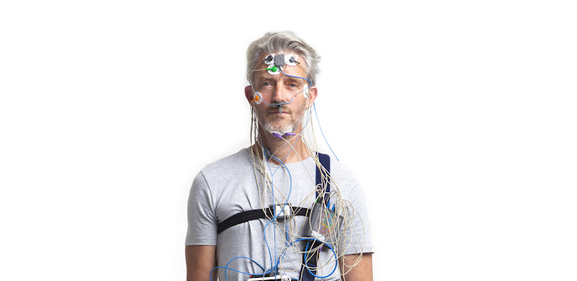
Should you start with a full sleep study?
Remember, Obstructive Sleep Apnoea is one of the most common sleep orders, and if you suspect that you have OSA, it may be worthwhile to see if you can rule it out in a more cost effective and convenient manner using a lower level test first, only escalating to a higher level test if it is indicated that you may have a more serious sleep disorder.
Whilst yes, the PSG is the gold standard in sleep testing and is the highest level (Level 1) of sleep study; despite being such an excellent test, the PSG comes with a number of notable disadvantages.
Inconvenient: A PSG requires that you obtain a referral and then wait to visit a sleep clinic or hospital, which can be time-consuming and may involve travel. You will likely have to stay there overnight to be tested.
Uncomfortable: Performing a PSG requires that numerous sensors and electrodes be attached to your body which can be extremely uncomfortable and make it difficult to sleep naturally.
These sensors are applied to various parts of your body including your scalp, temples, chest and legs. The sensors are then connected by wires to a computer.
Unnatural: The simple fact of the matter is, you don’t normally sleep at a sleep clinic or hospital with a bunch of sensors attached to you. Whilst you are entirely entitled to sleep where and however you wish, in our experience, most people spend most of their resting hours in bed at home.
You will be sleeping in a new place, in a different environment and under completely unique circumstances that are not likely to occur in your regular night of sleep. Whilst an accurate polysomnogram can be obtained without a full night’s sleep, we have heard many anecdotes about people who simply could not fall asleep or produce any data.
Expensive: A traditional sleep study can cost upwards of $1000.00, although you should be able to obtain a Medicare rebate to cover some of this cost.
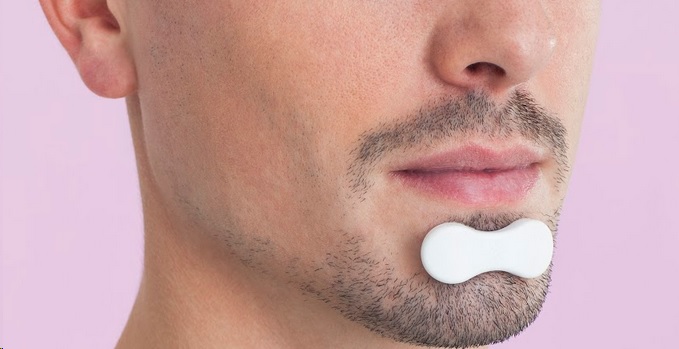
What is the alternative to a full sleep study?
You may now be wondering what the best alternative to the PSG process is. The cheapest and easiest way to begin testing for sleep disorders is to start with a level 4 sleep study. These are designed to be sufficient to rule in a respiratory sleep disorder but without the same drawbacks that a PSG has.
Done from the comfort of your home, a level 4, in-home sleep study makes the process of a home sleep test straightforward, fast and easy. This particular at home sleep study works through the use of a device overnight, allowing for the evaluation of your current sleep health.
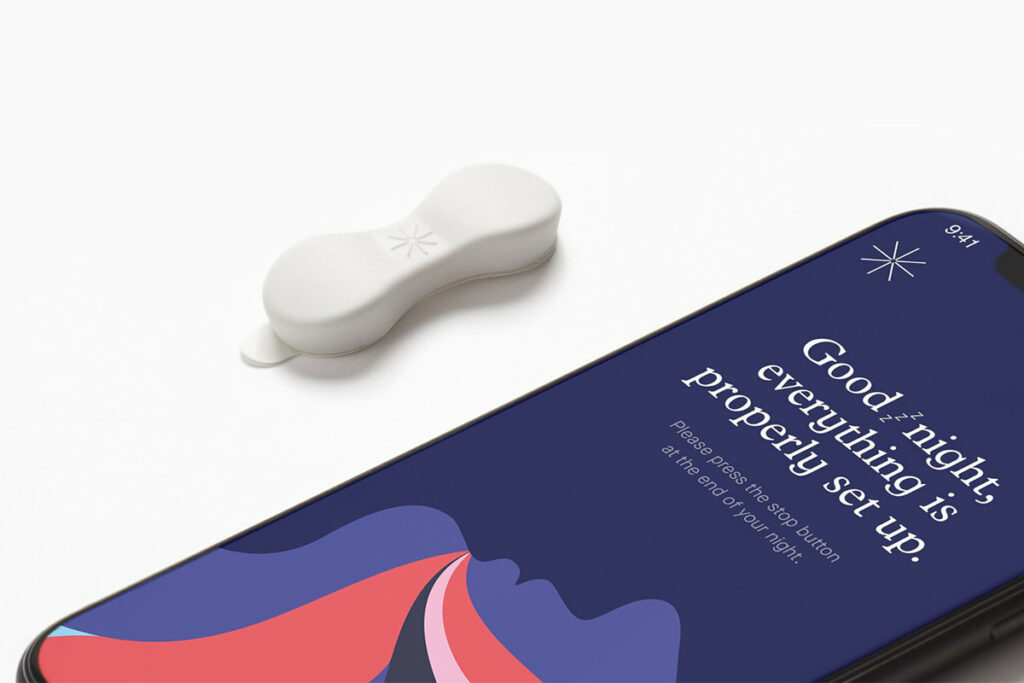
Sunrise Sleep Testing Device
What do Level 4 Sleep Tests measure?
Traditionally, level 4 sleep tests like the ResMed onesleeptest and Itamar WatchPAT worked using Peripheral Arterial Tonometry. Peripheral arterial tonometry (PAT) is a test that measures blood flow changes in the arteries. In PAT-based tests like the aforementioned Resmed onesleeptest and Itamar WatchPAT, very little could be inferred from this information aside from the basic metric that it measured, “Was there a drop in oxygen levels?”.
The level 4 sleep test Sunrise does not function using PAT. Sunrise uses a new channel, being mandibular movements, which, according to a plethora of studies performed by Sunrise, all of which can be found in the sources section of this article, can be used to infer a great deal of information about what signals its user’s brain is sending and how these signals relate to their breathing. This allows it to produce surprisingly accurate conclusions regarding its user’s sleep despite it being such a small and easy to use device.
Suffice to say, we highly recommend Sunrise as the best level 4 sleep test, being comparable with even Level 1 and Level 2 sleep tests at detecting Obstructive Sleep Apnoea despite being:
- Cheaper;
- Less intrusive;
- More intuitive; and
- Significantly more convenient.
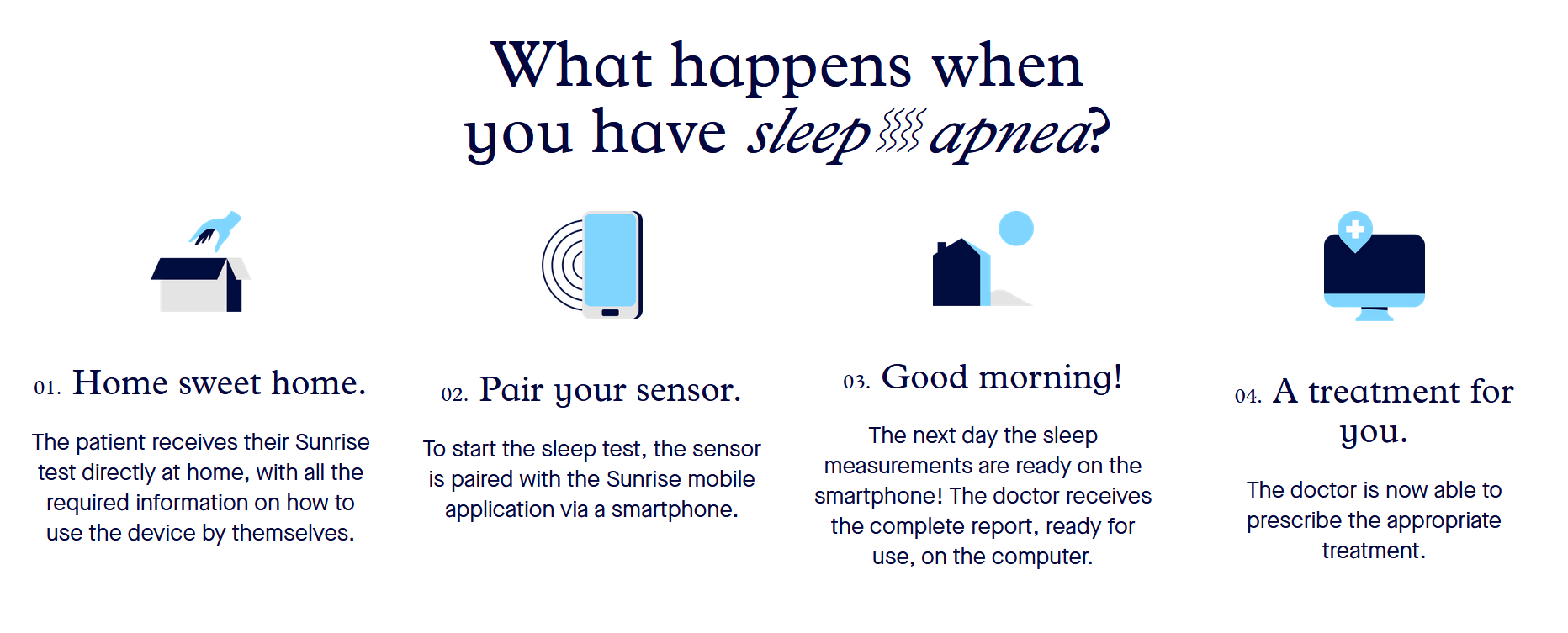
How does Sunrise work?
Sunrise is a certified medical device which advertises itself as “a sensor on the chin to see how the brain works at night” and that is (almost) exactly how simple the device truly is.
Sunrise is a 3 gram medical device that is delivered to your home to be placed on your chin while you sleep at home, in your bed, and which delivers your results to the Sunrise App as soon as you wake up. Once the report is ready, you can forward it to your doctor or sleep specialist to receive your personalised medical plan and monitoring. It is quick and easy to setup and use and can be done in the comfort of your own home and through the use of an extremely intuitive mobile app.
Sunrise doesn’t require that you wait and have to spend the night at the hospital or at a sleep clinic, let alone deal with all those cables and electrodes. It does this by leveraging the connection between the brain, the movement of the lower jawbone (mandibular movement) and the muscles of the upper respiratory tract to determine exactly what the brain is doing to keep you breathing and sleeping at night. Version 2 of Sunrise, set to release in early-2024, will also release with oximetry and a microphone so that it can listen to your breathing and/or snoring during the night.
That is not to say that polysomnography is now entirely obsolete. In order to detect other types of sleep disorders, including non-respiratory, a level 1 sleep test is required which can capture up to 16 channels of data. We recommend contacting your GP for a referral to a sleep specialist if you require more comprehensive studies on sleep.
How much does Sunrise cost?
The Sunrise sleep study is priced at a low one time price of $149.99 at CPAP Online Australia, including free return shipping. This low pricing is to ensure that testing for sleep apnoea is as accessible as possible, and that we can help patients to address their symptoms conveniently and quickly.
What about apps I can get on my phone for sleep monitoring?
Popular mobile applications for sleep monitoring such as Sleep Cycle, Rise and Pillow listen using your phone’s in-built microphone for breathing and other sounds made during sleep such as snoring, coughing, restlessness and sleep-talking to create a report of your sleep quality for that night.
Whilst these applications are generally harmless when used to keep track of your sleeping hours and interruptions during the night, they should not be relied on when making medical decisions and do not in any way replace or replicate the function of a sleep test or sleep study at any level discussed in this article.

What happens after a Sleep Study?
Once you have completed your sleep apnea test, you will receive results that outline whether or not you need to consider sleep apnoea treatment. The most effective treatment according to a 2018 report is Continuous Positive Airway Pressure therapy, commonly referred to as a CPAP Machine, which will help patients to get a good night’s sleep and to live a longer and healthier life.
Using a CPAP machine is extremely effective and is the most popular option for treating symptoms of sleep apnoea. If you have just found out that you have untreated sleep apnoea or otherwise have already decided that you need a CPAP machine, you may be having trouble figuring out which features are important or how to select the best one for you. Here is our take on the subject and some recommendations on what we think may be the best CPAP machine for you.
If you receive your sleep test results and are interested in finding out more information or need help, contact us.
What do studies have to say about Level 4 Sleep Tests?
A study4 conducted on the ResMed onesleeptest, formerly known as the NightOwl, whilst supportive of the device, noted that it, “could not assess the failure rate and performance of the NightOwl when applied for unattended testing in the home environment.” We find such a drawback to be concerning as this is the primary environment in which the product is marketed to be used.
As for the WatchPAT, a study performed in 20205, concluded that the test, “Overestimated the severity of OSA, a significant percentage of patients had clinically relevant misclassifications.” Our interpretation of the study and its results is that the device is likely to fail to report milder cases of sleep apnoea and would exaggerate the cases of moderate-severe cases. In either case, you would have to perform a secondary test to validate the results.
In contrast to both of these PAT-based devices, the findings of a study6 on the Sunrise Level 4 Sleep Test found that, “Automatic analysis of mandibular movement patterns reliably calculated respiratory disturbance index, and the use of this approach in obstructive sleep apnea diagnosis appears to be promising.”

